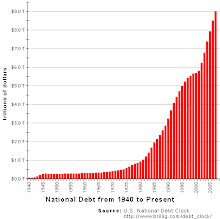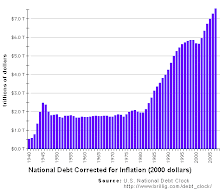
In the January 3, 2009 article "
Rustlers ride wideopen range of Great Basin," Associated Press writer Jeff Barnard reports:
FRENCHGLEN, Ore. – Cruising down a two-lane blacktop where the Catlow Rim drops down into a broad valley of sagebrush and bunchgrass, ranch manager Stacy Davies pulls his pickup over to let pass a herd of young bulls being trailed along the road by a couple of his buckaroos, as ranch hands are called here.
Arriving at the corrals at Three Mile Creek, Davies opens the tailgate on the gooseneck trailer hitched to his pickup, leads his horse into the cold hard sunshine, and swings up into the saddle to cut out cattle destined for shipment to market.
Two springs ago, Davies pulled up to these same corrals to find that dozens of weaned calves were gone, rustled, with truck tracks half-stomped by the remaining cattle the only clue to what had happened.
Out of pride and a reluctance to point a finger at neighbors, ranchers in the vast Great Basin outback where Oregon, Idaho and Nevada come together have been slow to admit that someone in their midst, perhaps even someone they know from barbecues and brandings, has been stealing cattle. Just who is doing it, and how they have gotten away with it for at least three years, remains a mystery.
"There's a lot of men who have worked these various ranches, moved from ranch to ranch and know this country well, who would be capable of such activity," said Davies, manager of Roaring Springs Ranch, which covers 1.1 million acres of private and federal range. "They know when we are at ballgames, they know when we're at church. They know where the animals are at."
Last summer, pushed by Jordan Valley rancher Bob Skinner, a past president of the Oregon Cattlemen's Association, ranchers overcame their reluctance to talk and started sharing information with law enforcement and each other. It quickly became clear that more than 1,200 cattle worth about $1 million had disappeared, far more than could be accounted for by the bones that dot this harsh country, or strays joining a neighbor's herd.
That would make this the rustling hotspot of the nation, said Rick Wahlert, Colorado state brand commissioner and secretary of the International Livestock Identification Association. The group's members in 20 states and three Canadian provinces have reported about 500 cattle thefts a year the past two years, up from 150 a year.
The association believes the jump in rustling is apparently spurred by the hard economic times, he said.
Rancher Skinner urged an aggressive new attitude among his far-flung neighbors, and he organized regular meetings to raise the profile on rustling. Once the cattlemen began admitting their losses, the numbers snowballed. The county sheriffs realized for the first time they had a major problem.
"Cattle theft — rustling — is not just something you read about in old Western magazines or watch in the Western movies you see," said Ed Kilgore, sheriff of Nevada's Humboldt County. "I really believe it's going on with people riding horses like in the old days, gathering cattle and taking them to a place they can load them up on transport."
With cows worth as much as $1,200 apiece, and calves $650, the losses mounted quickly, Skinner said. Despite struggling with their losses and the recession, ranchers have kicked in close to $60,000 in reward money to back a wanted poster circulating with the brands of stolen cattle.
Ranchers are keeping closer watch on their cattle, even with hidden cameras, and taking counts every time a herd moves through a gate, so they can report a theft sooner.
"The worst thing we can do is just to not say anything and hope they show up, then four or five or who knows how many months later go, 'Oh my gosh, I'm missing a bunch,' and by then there's no more smoking trail," Skinner said.
Once the stolen cattle are loaded on a truck, there is no telling where they might end up. They could be driven in a matter of hours to be sold in a state like Kansas with no brand laws, said Wahlert.
Or they could be hidden out in a remote pasture to produce their calves year after year, which could easily be branded and sold, said Idaho brand inspector Larry Hayhurst.
"There are a lot of ways to beat the system," he said.
This high desert country has fed cows since the early 1870s, when California cattle barons who struck it rich feeding gold miners first trailed their herds here. Even today, cattle outnumber people 1,000 to one, and it can take 40 acres to feed one cow and its calf for a month.
Buckaroos, a corruption of the Spanish word vaquero, follow many of the Old California traditions, braiding their own bridles and hackamores, and throwing long ropes that give them more room to slow a calf without hurting their horse.
Bred cows are turned loose on rangeland far from home and left on their own for months at a time. The only good count of what the weather, predators, disease, poisonous weeds and now rustlers have left comes at the fall gather.
Kilgore said they have established the rustling is real, but have little hard evidence to target any suspects.
The Roaring Springs theft from corrals next to a paved highway was the exception. Most cattle have disappeared from remote valleys where no one lays eyes on them for months at a time.
Jordan Valley ranchers Rand and Jane Collins swim their cows across the Owyhee River to get them to their federal allotment in February, and don't see them again until June or July, when they brand the new calves.
Rand Collins figures about 90 mother cows were stolen in the spring of 2007, though it was fall before he could be sure they weren't just lost. All carried the box-slash brand — a square with a diagonal line inside. The fact the cows had yet to drop their calves made them easier to handle on the long drive _three to five days — to a gravel road where they could be loaded on trucks. And it gave the rustlers 90 calves with no brands.
"It's not the kind of thing you like to admit," Rand Collins said. "There's always the chance as the season goes along that the cattle will turn up, and then you look like a fool for crying wolf."
Malheur County Sheriff Andrew Bentz figures the rustlers are a small group, more like a family than a gang, with the horseback skills to drive a herd hundreds of miles in rough country to read a road good enough to handle a cattle truck.
Chances of catching them in the act are slim in this wide-open country, he said.
"It's a long and methodical process of following money and the animals themselves," he said. "When the rustlers are named the people who are arrested will be no surprise to anybody. Nobody falls in out of Mars and takes care of this business."
When the fall gather came in this year, the losses appeared to be down, leading several ranchers to figure the rustlers are feeling the heat and laying low.
"We catch guys stealing stuff all the time. Those are onesy-twosy guys," said Idaho Brand Inspector Larry Hayhurst. "This is something different.
"They have a system down to beat this system. They have it figured out. We've just got to figure out what they're doing. Sooner or later we'll find out."
 In the January 3, 2009 article "Rustlers ride wideopen range of Great Basin," Associated Press writer Jeff Barnard reports:
In the January 3, 2009 article "Rustlers ride wideopen range of Great Basin," Associated Press writer Jeff Barnard reports:





Unemployment is very likely to cause problems with increasing crime in coming years.
ReplyDelete